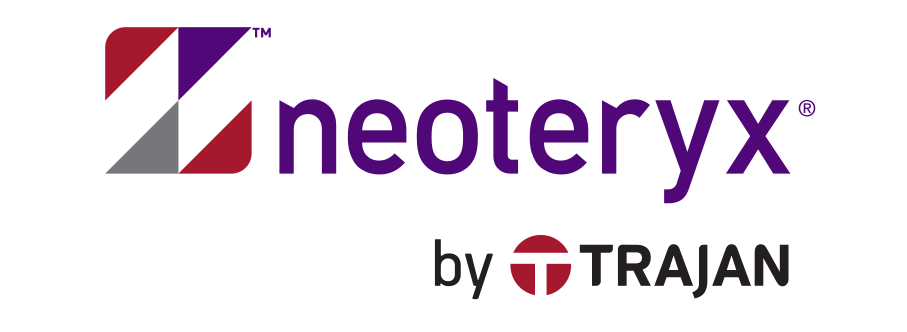Share this
5 considerations for the application of microsampling in drug discovery
by Neoteryx Microsampling on Nov 26, 2019 12:34:00 AM
 Data collected in vivo is mandatory to make informed decisions about drug development and screening. Researchers previously relied on animal models to obtain experimental measurements. The collection of specimens was invasive, labor-intensive, time-consuming, and costly.
Data collected in vivo is mandatory to make informed decisions about drug development and screening. Researchers previously relied on animal models to obtain experimental measurements. The collection of specimens was invasive, labor-intensive, time-consuming, and costly.
A recently published paper takes a broad view of the science behind microsampling and examines its applications in animal testing, drug discovery, and beyond. It's worth reading in toto. Here are some of its key findings and considerations.
Microsampling: From Animal Research to Human Healthcare
Researchers can evaluate multiple pharmacokinetic, physiological, and pharmacodynamic endpoints simultaneously, using the same animal using rat tail vein blood collection and blood microsampling technology. It reduces animal use and the stress associated with excessive fluid removal.
Additionally, for humans, microsampling is an excellent alternative to venipuncture because it facilitates easy home blood sampling. This feature is particularly important for pharmaceutical companies targeting patients with episodic diseases.
The implementation of microsampling in pharmaceutical drug discovery compels researchers to consider several factors:
1. Volumetric Accuracy in Dried Blood Sampling
While microsampling has proven to be a more effective alternative old-fashioned to DBS cards, researchers are concerned about the accuracy of the data derived from the samples. The availability of a Volumetric Absorptive Microsampling (VAMS®) device (Mitra®) counters this fear. Researchers can collect multiple samples using multiple Mitra® micro samples.
2. Feasibility Analysis
Analysts should conduct a feasibility assessment before applying the technology to a study. The analysis should determine whether the study compound is feasible regarding the stability and sensitivity of the microsample analyte.
3. Probability of Data Continuity
Microsampling, properly used, should foster data continuity for future programs. This ensures TK and PK data can be translated between species and studies where necessary. The need for repeat studies is reduced.
4. Sample Handling Training
The quality of the sample is critical to the success of a study. Staff and patients should be trained to handle the samples collected. This improves sample quality and reduces data variability, especially in self-sampling.
5. Smaller, Smarter Samples
Microsampling involves the collection of smaller samples, so staff should be trained in handling smaller devices and sampling from capillaries. Researchers should also factor in the need for changes in shipping procedures and equipment required to carry the micro samples.
Smarter Sampling in Drug Discovery: Making It Work
The ability to extract multiple profiles from the same specimen is an essential factor in early drug discovery. The emergence of microsampling technology expedites this process by improving data quality and reducing the number of specimens required for studies.
However, there is a need for researchers to factor the challenges that come with handling new technology. Special samples handling training, accuracy, and the need for feasibility analysis should be considered.
You can learn a lot more when you consult with a microsampling specialist from Neoteryx, the blood microsampling innovator.

Share this
- Microsampling (206)
- Research, Remote Research (119)
- Venipuncture Alternative (105)
- Clinical Trials, Clinical Research (83)
- Mitra® Device (73)
- Therapeutic Drug Monitoring, TDM (51)
- Dried Blood Spot, DBS (39)
- Biomonitoring, Health, Wellness (30)
- Infectious Disease, Vaccines, COVID-19 (24)
- Blood Microsampling, Serology (23)
- Omics, Multi-Omics (21)
- Decentralized Clinical Trial (DCT) (20)
- Specimen Collection (18)
- Toxicology, Doping, Drug/Alcohol Monitoring, PEth (17)
- Skin Microsampling, Microbiopsy (14)
- hemaPEN® Device (13)
- Preclinical Research, Animal Studies (12)
- Pharmaceuticals, Drug Development (9)
- Harpera Device (7)
- Industry News, Microsampling News (5)
- Antibodies, MAbs (3)
- Company Press Release, Product Press Release (3)
- Environmental Toxins, Exposures (1)
- July 2025 (1)
- May 2025 (1)
- April 2025 (2)
- December 2024 (2)
- November 2024 (1)
- October 2024 (3)
- September 2024 (1)
- June 2024 (1)
- May 2024 (1)
- April 2024 (4)
- March 2024 (1)
- February 2024 (2)
- January 2024 (4)
- December 2023 (3)
- November 2023 (3)
- October 2023 (3)
- September 2023 (3)
- July 2023 (3)
- June 2023 (2)
- April 2023 (2)
- March 2023 (2)
- February 2023 (2)
- January 2023 (3)
- December 2022 (2)
- November 2022 (3)
- October 2022 (4)
- September 2022 (3)
- August 2022 (5)
- July 2022 (2)
- June 2022 (2)
- May 2022 (4)
- April 2022 (3)
- March 2022 (3)
- February 2022 (4)
- January 2022 (5)
- December 2021 (3)
- November 2021 (5)
- October 2021 (3)
- September 2021 (3)
- August 2021 (4)
- July 2021 (4)
- June 2021 (4)
- May 2021 (4)
- April 2021 (3)
- March 2021 (5)
- February 2021 (4)
- January 2021 (4)
- December 2020 (3)
- November 2020 (5)
- October 2020 (4)
- September 2020 (3)
- August 2020 (3)
- July 2020 (6)
- June 2020 (4)
- May 2020 (4)
- April 2020 (3)
- March 2020 (6)
- February 2020 (3)
- January 2020 (4)
- December 2019 (5)
- November 2019 (4)
- October 2019 (2)
- September 2019 (4)
- August 2019 (4)
- July 2019 (3)
- June 2019 (7)
- May 2019 (6)
- April 2019 (5)
- March 2019 (6)
- February 2019 (5)
- January 2019 (8)
- December 2018 (3)
- November 2018 (4)
- October 2018 (7)
- September 2018 (6)
- August 2018 (5)
- July 2018 (8)
- June 2018 (6)
- May 2018 (5)
- April 2018 (6)
- March 2018 (4)
- February 2018 (6)
- January 2018 (4)
- December 2017 (2)
- November 2017 (3)
- October 2017 (2)
- September 2017 (4)
- August 2017 (2)
- July 2017 (4)
- June 2017 (5)
- May 2017 (6)
- April 2017 (6)
- March 2017 (5)
- February 2017 (4)
- January 2017 (1)
- July 2016 (3)
- May 2016 (1)
- April 2016 (2)


No Comments Yet
Let us know what you think